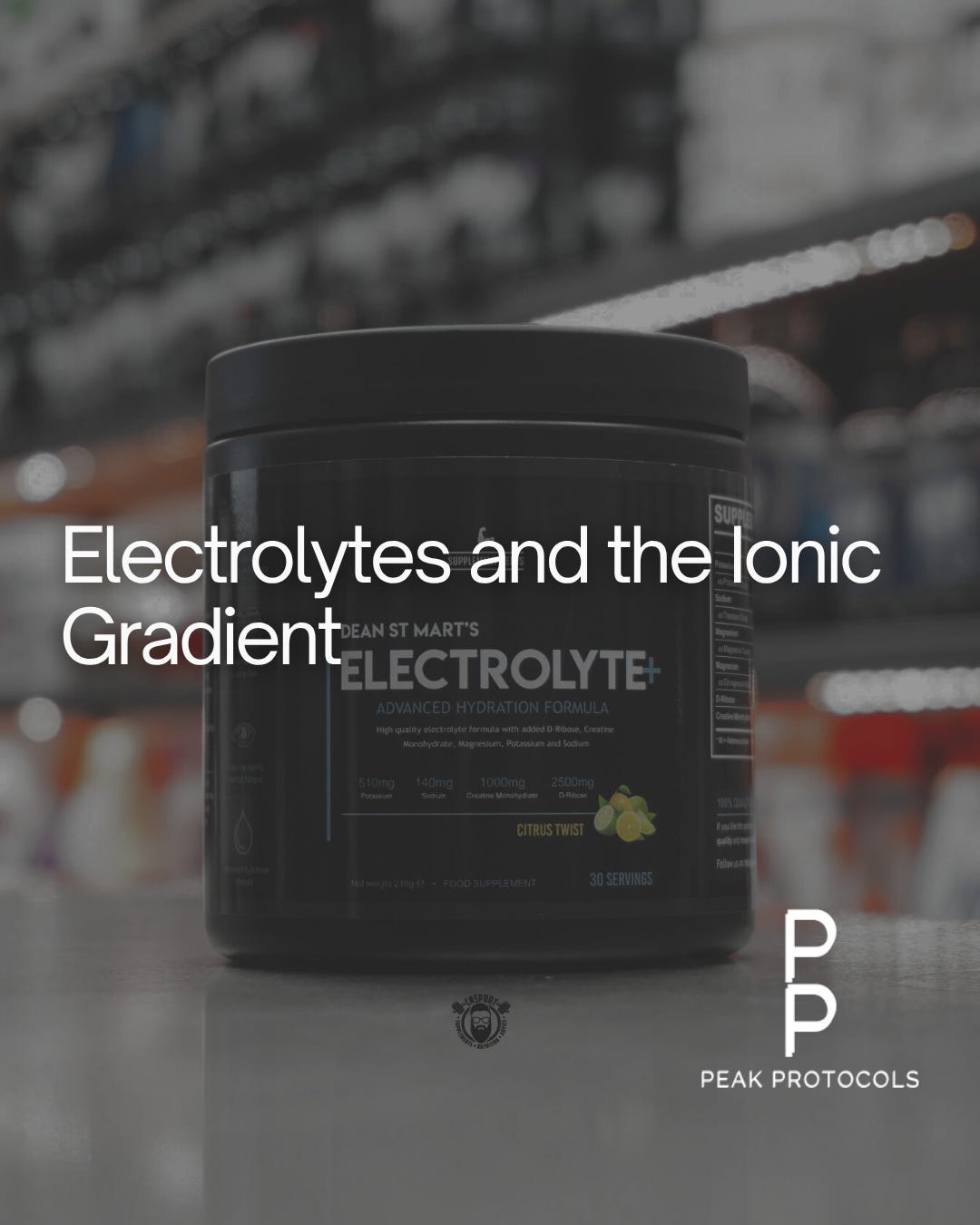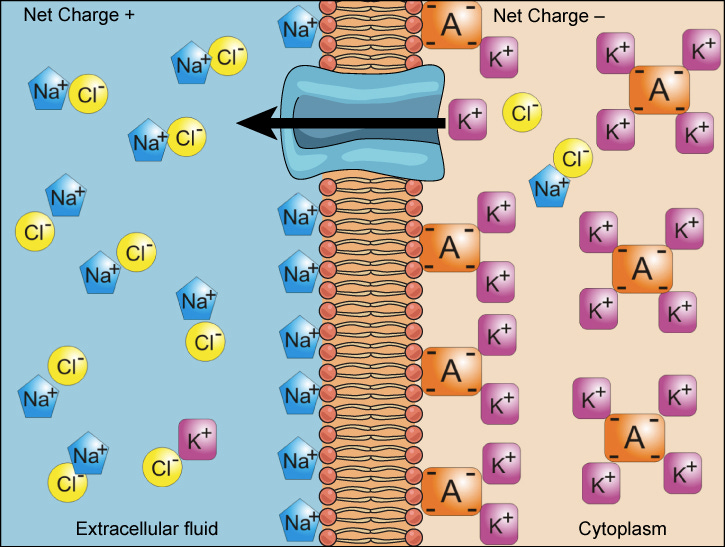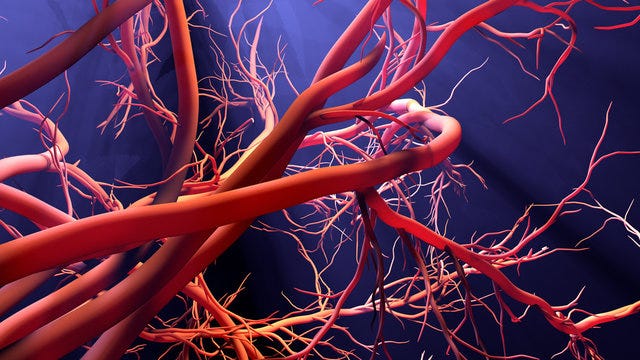The Most Overlooked Aspect of Health: Electrolytes and the Ionic Gradient
How to hydrate properly #36
You need to understand something that most people completely miss.
It’s not just about drinking water. It’s not even about “staying hydrated.”
It’s about powering the battery of biology.
Your cells run on an electrical gradient. And when that gradient is optimized, everything including
Your brain, muscles, mitochondria & cardiovascular system performs at a higher level.
When it’s not? You’re running on low power mode and don’t even realise it.
The Ionic Gradient: Your Body’s Battery
Here’s what most people don’t understand:
Your cells maintain a precise electrical charge across their membranes. This charge is created by the distribution of ions specifically potassium (K⁺), magnesium (Mg²⁺), sodium (Na⁺), and calcium (Ca²⁺).
The optimal state looks like this:
Inside the cell:
•High K⁺ (potassium)
•High Mg²⁺ (magnesium)
Outside the cell:
•High Na⁺ (sodium)
•High Ca²⁺ (calcium)
This gradient is maintained by the sodium-potassium pump (Na⁺/K⁺-ATPase), which actively pumps 3 sodium ions out and 2 potassium ions in, using ATP as fuel
When this gradient is properly maintained, your body operates like a high-performance machine.
When it’s not? Everything slows down.
The Benefits of a Properly Maintained Ionic Gradient
1. Faster Brain Signaling
Your neurons fire through action potentials
Electrical signals that travel along nerve cells. These signals depend entirely on the sodium-potassium gradient.
Optimized Na⁺/K⁺ pump = faster action potentials.
What this means for you:
•Sharper cognition
•Quicker reflexes
•Better memory encoding
•Reduced mental fatigue
•Clearer focus
When your electrolyte balance is dialed in, your brain operates at higher speed and efficiency. You think faster. You react faster. You remember better.
2. Improved Blood Pressure Regulation
Magnesium relaxes vascular smooth muscle. Potassium helps with vasodilation and sodium balance. Together, they regulate your cardiovascular tone.
What this means for you:
•Reduced sympathetic overdrive (less “fight or flight” activation)
•Smoother cardiovascular tone
•Better blood pressure control
•Reduced risk of hypertension
When your electrolytes are balanced, your blood vessels aren’t constantly constricted. Your heart doesn’t have to work as hard. Your cardiovascular system runs smoothly.
3. Enhanced Kidney Health
Your kidneys are responsible for filtering blood, regulating fluid balance, and maintaining electrolyte homeostasis. Proper sodium-potassium handling reduces renal stress.
What this means for you:
•Better filtration
•Improved fluid regulation
•Protection of glomeruli (the filtering units of your kidneys) from pressure overload
•Reduced risk of electrolyte imbalance and kidney damage
When your electrolytes are balanced, your kidneys don’t have to work overtime trying to compensate. They can do their job efficiently without being overloaded.
4. Increased ATP Production
Here’s something most people don’t realize: The Na⁺/K⁺-ATPase pump is one of the largest ATP consumers in your body.
It uses about 20-40% of your resting energy expenditure just to maintain the ionic gradient.
But here’s the key: Efficient gradients = efficient mitochondria.
When your electrolyte balance is optimized, your mitochondria don’t have to work as hard to maintain the gradient. They can allocate more energy to other processes muscle contraction, protein synthesis, detoxification, repair.
What this means for you:
•Better cellular energy
•Higher performance
•Faster recovery
•More ATP available for everything else your body needs to do
When your ionic gradient is dialed in, your mitochondria operate more efficiently. You have more energy. You perform better. You recover faster.
How to Achieve This: The Electrolyte Protocol
Most people are deficient in potassium and magnesium, and consume too much sodium relative to potassium.
Keep reading with a 7-day free trial
Subscribe to Biohacker to keep reading this post and get 7 days of free access to the full post archives.






